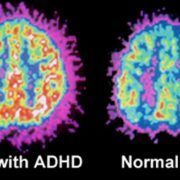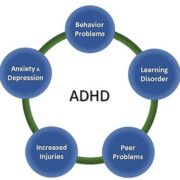Behavioral Management for Defiant Children: Part 2
Behavioral Management for Defiant Children: Part 2
Behavioral Management for Defiant Children: Part 2
In the first part of this series, we discussed seven different myths about parenting. With these common parenting misconceptions cleared up and out of the way, we can begin to build a more effective and stable parenting foundation with Alan Kazdin’s ABCs of parenting: Antecedent, Behavior, and Consequence. Understanding and consistently implementing this method will lead to improved behavior from your children, decreased stress for you, and overall better relationships in your family. Let’s break it down:
Antecedent: The Before
Alan Kazdin describes the first part of his parenting strategy, the antecedent, as “everything that comes before a behavior”. This includes the way you describe and request a behavior, how this behavior is modeled, and the context, both verbal prompts and instructions and nonverbal cues, that precedes the behavior.
One of the key ideas of the antecedent is changing the way you think of behaviors. Specifically, moving away from labeling behaviors in terms of what you don’t want, to phrasing behaviors in terms of what you do want. As you will begin to notice, there is a common theme among effective parenting: positive is stronger than negative. Requesting a behavior through the “positive opposite”, as Kazdin calls it, versus a negative approach (i.e. “Please put your dirty clothes in the hamper”, a positive phrase, instead of “Don’t throw your dirty clothes on the floor”, a negative phrase), is a stronger, more durable method for establishing desired behaviors. This is because it is much easier and effective to reward positive behaviors than to punish negative ones.
Behavior: The During
Once you’ve set up the requests, contexts, and expectations for a desired behavior, the next step is to help your child successfully and consistently perform the behavior. There are two important components to Behavior: shaping and practice. Shaping is when a behavior is broken down into smaller, more doable steps, building upon one another until the ultimate desired behavior is achieved. The crucial piece to shaping is to reward the small steps that are in the right direction throughout the process, even if they are less than perfect. Finding any bit of success and acknowledging it provides the encouragement and stepping stones to eventually achieve the final, complex task.
Just with any new skill, practice makes progress. In order to see consistency, your child will need ample opportunities to practice the desired behavior. Furthermore, as you may recall from the parenting myths, just because your child may be capable of performing a behavior or you’ve witnessed them perform it once or twice, it is by no means a solidified habit. Not only do children need practice, but they also must learn to associate the desired behavior with a reward. Therefore, these learning moments must be paired with positive reinforcement, which brings us to the final step: Consequence.
Consequence: The After
The final, and perhaps most crucial, part to behavior management is the Consequence, any form of positive reinforcement that follows a behavior. After witnessing any form of a desired behavior, whether it is a small step in the right direction or the complete complex task, your most effective and most promising tool is to provide your child with a reward. Rewards can be anything positive, ranging from attention, words of affirmation, or gifts. The reward itself does not matter as much as it does to deliver it as consistently and immediately as possible following a behavior. The idea is to establish and solidify the association of the behavior with the reward.
There you have it; parenting as easy as A, B, C! Following these research-based, proven steps, you can be sure to see improvement in the behavior of your “defiant” child. In the final blog of this series, we will cover what this method looks like in action. Until then, bring any questions you have to Dr. Gordon and his staff at Pathways Neuropsychology Associates. With their expert knowledge on parenting and child psychology, they can help you learn more about how you can start implementing ideas of positive reinforcement into your daily routines and master behavior management.
Source: The Kazdin Method for Parenting the Defiant Child by Alan E. Kazdin, PhD
The post Behavioral Management for Defiant Children: Part 2 appeared first on Pathways Neuropsychology Associates.
Source: Pathways Neuropsychology
Behavioral Management for Defiant Children: Part 2













Leave a Reply
Want to join the discussion?Feel free to contribute!